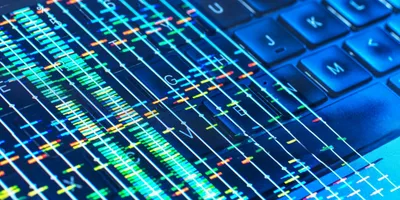Researchers conducting metabolic studies have always faced a common challenge: the development and implementation of accurate instrumentation and rigorous methodologies for the continuous monitoring of cell cultures.
The solutions for this challenge must ensure that the data gathered from cell monitoring is predictive of in vitro biological model systems and performed in a way that doesn’t compromise cell cultures or data integrity. This is crucial for research and development labs that depend on having high quality and reproducible data.
This article will identify the difficulties inherent to traditional methods of cell culture analysis and discuss solutions to the challenges facing cell-culture-based laboratorians.
Existing methods of cell culture analysis
Cell cultures are a component of many biological research efforts but are particularly crucial to the study of metabolism. Metabolic studies typically require specialized equipment, such as incubators, meant to imitate physiological conditions that can vary depending on the cell types or project goals.
Cell culturing is usually performed on either adherent cells, typically used for examination of cell-to-cell interactions, or suspension cells, which grow freely in liquid medium. Regardless of how researchers grow the cells, modern standards dictate that the cultures need continuous monitoring, which can easily lead to complications when monitoring equipment fails or due to the invasiveness of the monitoring technique.
Traditional methods of cell culture analysis each have their difficulties in application. To address these issues, multiple methods can be applied in conjunction to compensate for the shortfalls affecting singular methods—for example, combining the use of visual inspection via microscopy with offline sampling. Microscopy enables assessment of cell morphology, culture density, and general health using an instrument that is immediate and non-invasive. But this approach is limited in the quantitative data collected, giving no information about cell viability or metabolic data.
To offset this problem, offline sampling can gather this missing data (e.g. monitor oxygen levels, nutrient abundance, etc.), but it risks disrupting the culture, introducing non-experimental stressors, and increasing probability of contamination.
Further, when combining methodologies, considerations must include the added complexity and cost of using multiple analytical techniques, whether simultaneously or intermittently, to gather the necessary data. For example, it’s not always clear how to minimize experimental bias by timing the application of non-invasive and invasive monitoring techniques.
Other concerns include:
• The recurring cost of purchasing reagents;
• High initial cost of equipment;
• The hiring of skilled personnel to calibrate and maintain this equipment;
• How measurement tools might be affected by day-to-day operations or by the cultures they measure.
Issues in cell culture monitoring are not only logistical, but also practical. These challenges tend to be about problems with the sensors used in many methods and how their performance can be affected over the duration of the study.
For example, data-gathering sensors can be prone to fouling over the course of a measurement period due to the culture medium accumulating on them, especially in the case of dissolved oxygen probes. Another challenge is the inevitable degradation of the sensor itself, usually in the form of wear and tear from physical or chemical stressors. Furthermore, it may be difficult to adequately match the calibration environment to the environment of the culture medium. Should the two environments not match in a significant way (e.g., a temperature discrepancy), then the data gained from that sensor can be skewed and jeopardized.
Advanced Lab Management Certificate
The Advanced Lab Management certificate is more than training—it’s a professional advantage.
Gain critical skills and IACET-approved CEUs that make a measurable difference.
New technologies prevent degradation, provide multiplexing
The challenges above display the need for using robust and powerful technologies coupled with careful planning to ensure cell culture integrity while collecting valuable data from accurate, well-maintained sensors and equipment.
Manufacturers have begun introducing new technologies to address these many challenges. One such technology is advanced sensors that offer consistent measurement data via non-invasive optical sensors that don’t require physical contact with the culture medium.
These sensors are to be constructed of materials that make them resistant to sensor fouling, prevent degradation, and mitigate errors like temperature drift. Additionally, sensors that are capable of multiplexing and simultaneously recording multiple analytes or environmental conditions can reduce the device count within culture chambers, saving space and reducing the total surface area for potential contamination. Furthermore, sturdier sensors that don’t require replacement or recalibration enhance closed systems, making them far less prone to contamination risks and additional stressors.
New sensors step in to aid cell culture monitoring
Advanced sensor technologies present exciting solutions for improving the quality of research data in ways that circumvent many traditional challenges of cell culture monitoring.
The limitations of individual methods, the risk of contamination during examination or calibration, the costs associated with each method, and current-generation sensor issues are all important factors to consider when designing successful cell culture monitoring and metabolic studies.
The advent of newer technologies that can mitigate or eliminate these issues are incredible advancements that can be used to gather increasingly complex, sensitive, and high-quality data that would facilitate further discovery in the biological and pharmaceutical research fields.


